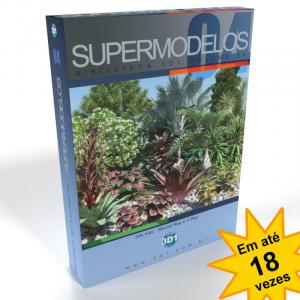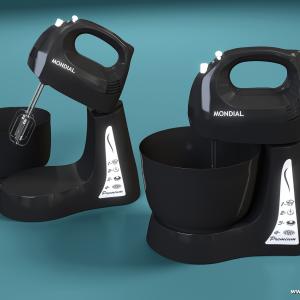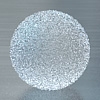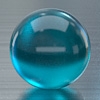Cursos e Produtos
Últimos tutoriais
Últimos Downloads
Galeria dos Membros

Quintino3D
Blumenau, SC - AC

D2_Unrio
Sao Paulo - S.P. - RJ

Vynycius
Petrópolis

Leandro Mendonça
Curitiba PR - PR

leonpitter
RJ - RJ
Grupo de Estudo: Irradiance Particles e Importons
Juliano, tem que apagar o .x64 do dll
Gente, este teste foi feito com 30milhões de photons com raio 1,5. Percebi que não muda NADA quando reaproveitamos o mapa salvo e mudamos os parâmetros do importons. Acho que tem que fazer o mapa todas as vezes que tiver que testar alguma coisa :(
do dll e do shader tb, Juliano. Eduardo, só acho que eles se referem ao merge zerado, do importons... Pra minha decepção, algo deu errado em tudo q fiz...O GI+FG ficaram tão bons que pensei que fosse do IP, comparando as imagens constatei q tá tudo igual...vou repetir os procedimentos do pessoal aqui pra ver se descubro algo... boa lembrança de ler este texto, até mais tarde com postagens
fiz isso e deu erro na inicialiazação do max
tenta reiniciar o Pc... aqui funfou bem no 2010 64 bits... conforme falei, fiz outros testes.. segue link pra animação com fg+GI+IMPortons+PI... por isso deu zebra! mas segue pq ficou igual a FG+GI, ou seja, não desliguei o FG... voui renderizar novamente só com fg desligado pra ver... Seguem tb imagens e setagens, abs
seguem as imagens...
respectivamente, GI, GI+FG, GI+FG+Importons e IP (sem FG)
Faltou a setagem...
Eduardo, legal as traduções e conclusões. Parabéns. Eu também notei que não adianta salvar o mapa para regular o importons. Pode salvar e regular o raio do GI, mas os valores do importons não alteram nada no mapa salvo. O manual diz que os importons são traçados antes do GI e é usado para otimizar o mapa de photons, então acho que não pode reaproveitar. Nos meus testes valores altos do merge do importons criavam photons muito separados e não fazia uma imagem suave, perdia muita qualidade. Com merge menor o importons descarta os photons semelhantes só dentro deste raio e a imagem fica melhor. Mas acho que o mapa de photons fica maior com merge menor. O task size eu não mexi e o trace depth não deu muita diferença mesmo usando com FG. O Duda disse que os valores ideais ficam entre 2 e 4. Eu não testei o traverse com o clip de câmera, mas desmarcando o visible to camera para ver através da parede do box ficou muito estranho criando poucos photons na imagem. O Duda tinha falado que o emitted era view dependente e o density não, mas eu não consegui bons resultados zerando o emitted e usando só o density. Consegui melhores resultados com 1 no density e valores mais altos no emitted, entre 50 mil e 150 mil. Eu fiz um teste com IP hoje mas não gostei do resultado e do tempo de render, preciso testar mais. Nas imagens ai em cima estão os testes com importons e a suavidade resultante com o uso do FG. Se o raio dos photons for muito pequeno e o merge do importons for mais alto, fica com poucos photons e cria manchas quando suaviza com o FG. A primeira imagem mostra o render dos photons e a segunda a suavização do FG. Com um raio que dê para os photons se misturarem e não aumentando muito o merge do importons, os photons se misturam melhor e a imagem final com FG fica mais suave. A terceira imagem mostra os photons e a quarta o resultado com FG.
São Paulo Futebol Clube
Eduardo. Olha o texto do manual do mental ray sobre importons e IP. É bem interessante. Importons Importons are "virtual particles". In some aspects they are similar to photons: they bounce in the scene. There are significant differences though: unlike photons, importons do not distribute energy. Instead, they contain a color describing with which factor an illumination at a certain location would contribute to the final image. That way, they provide an information for the rendering core on how the computational efforts should be distributed in order to get an image of best quality with limited computational resources. Unlike photons, importons are emitted from the camera and bounce towards lights, i.e. in the direction opposite to the photons. However, the duality of lights makes it possible to apply photon shaders to importons. For simplicity reason, mental ray does not introduce a new type of shaders but uses photon shaders for importons as well. Importons are used as a supplementary mechanism which improves the rendering quality and performance. It is used as the primary mechanism to drive the quality of irradiance particles. Another usage in current mental ray is to improve the quality of the globillum photon map. It allows to dramatically reduce the size (and thus speed up lookup) of photon maps with a help of the merging within a variable merging distance which is determined with the help of importons. Such variable merging distance is superior to the existing constant merging distance. If enabled, importons are shot before photon maps are created. They are used to during the globillum photon map creation. As the are not relevant for globillum photon map nearest neighbor lookups, importons are discarded once the photon map is created. The importons map is controlled by scene options. Irradiance Particles This algorithm is a novel approach to compute global illumination based on importance sampling, which tends to converge much faster to a desirable quality than the existing solutions like global illumination photon tracing combined with final gathering. Before rendering starts, importons are shot from the camera into the scene and collected as a new kind of particle, called an irradiance particle. They carry information about the amount of direct illumination coming in at their position (hence the name "irradiance") and, optionally, the amount of indirect irradiance incident at their position (if indirect passes are enabled). During rendering, the stored particles are used to estimate the irradiance at a shading point: if just direct illumination was collected for irradiance particles, this is equivalent to one bounce of indirect lighting. The irradiance can also be interpolated from precomputed values at the particle positions. The irradiance particle algorithm simulates some but not all of the indirect lighting interactions of the traditional global illumination algorithms in mental ray. For this reason, if irradiance particles are enabled then mental ray will turn off the global illumination photon tracing automatically if it was activated. This is a common situation when external applications are asked to generate mental ray scenes with photon shaders attached, which are needed for importons. Caustics can be used together with irradiance particles because they are used to capture indirect lighting effects that irradiance particles cannot simulate. If both final gathering and irradiance particles are enabled then final gathering is preferred and irradiance particles will be switched off automatically. Irradiance particles support a special IBL-style functionality which can be enabled by setting the number of indirect passes to -1. In this case only the environment map lighting but not diffuse bounces are taken into account. If interpolation is disabled then only environment presampling map is build and no further precomputation steps are required. If interpolation is enabled then particles are emitted in the precomputation pass in a usual way, but used as interpolation points only.
São Paulo Futebol Clube













.jpg)


